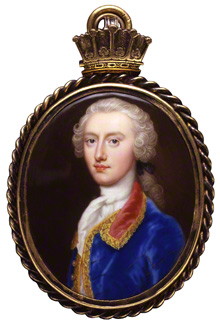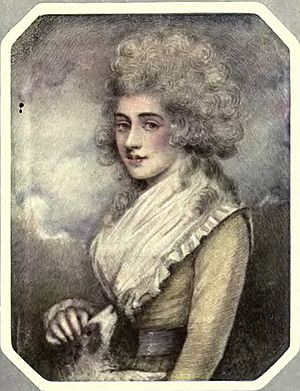William Nassau de Zuylestein, 4th Earl of Rochford facts for kids
Quick facts for kids
The Earl of Rochford
|
|
|---|---|

Portrait by Christian Friedrich Zincke
|
|
| Secretary of State for the Northern Department | |
| In office 1768–1770 |
|
| Prime Minister | Duke of Grafton |
| Preceded by | The Viscount Weymouth |
| Succeeded by | The Earl of Sandwich |
| Secretary of State for the Southern Department | |
| In office 1770–1775 |
|
| Prime Minister | Lord North |
| Preceded by | The Viscount Weymouth |
| Succeeded by | The Viscount Weymouth |
| Leader of the House of Lords | |
| In office 1770–1775 |
|
| Prime Minister | Lord North |
| Preceded by | The Viscount Weymouth |
| Succeeded by | The Earl of Suffolk |
| Personal details | |
| Born | 17 September 1717 |
| Died | 29 September 1781 (aged 64) |
William Henry Nassau de Zuylestein, 4th Earl of Rochford (born September 17, 1717; died September 29, 1781) was an important British diplomat and politician. He served as a top government minister, known as a Secretary of State. He was also an ambassador in Spain and France, representing Britain in these powerful countries.
Lord Rochford was a personal friend of famous people like the actor David Garrick and the writer Laurence Sterne. He is also famous for bringing the first Lombardy poplar tree to England in 1754. King George III trusted him as an expert on foreign countries and a loyal, hard-working minister. Rochford was one of the few government ministers of his time who had started his career as a professional diplomat.
Contents
Early Life and Education
William Henry Nassau van Zuylestein was born in 1717. His family had both English and Dutch roots. His great-grandfather was a close friend of King William III and came to England with him. The king rewarded him with the title Earl of Rochford.
William went to the famous Eton College from 1725 to 1732. There, he became friends with other boys who would also grow up to be important politicians. After Eton, he went to a school in Geneva, Switzerland. This helped him become fluent in French, which was very useful for a diplomat. In 1738, when he was 21, his father died, and he became the 4th Earl of Rochford.
A Career in Politics and Diplomacy
Working for the King
In 1739, Rochford was appointed a Gentleman of the Bedchamber to King George II. This was a special honor and meant he was a trusted assistant to the king. He was a loyal supporter of the king and the government.
In 1756, he became the Lord Lieutenant of Essex. This job made him the king's main representative in the county. He was also put in charge of the Essex militia, which was a local group of part-time soldiers, and became its Colonel in 1759.
Envoy to Turin
Rochford wanted to work in diplomacy, which is the job of managing relationships between countries. In 1749, he was sent to Turin, a city in Italy. At the time, Turin was an important place for British foreign policy. Rochford's job title was Envoy, which is like an ambassador.
He was very good at his job. He successfully negotiated on behalf of English miners and helped Protestant communities in the Alps. He became good friends with the King of Sardinia, Carlo-Emmanuele III, by going on hunting trips with him.
Ambassador to Spain

In 1763, Rochford became the British ambassador to Spain. His secret instructions were to watch the Spanish navy and try to reduce France's influence over the Spanish king, Carlos III.
One of his first big tasks was dealing with a problem where British woodcutters were kicked out of an area in Central America by Spain. Rochford firmly demanded that Spain let them back, and he was successful. He also uncovered a secret French plot to set fire to British naval shipyards. While in Madrid, he became friends with the young French writer Beaumarchais, who later wrote the famous play The Marriage of Figaro.
Ambassador to France
In 1766, Rochford was appointed ambassador to France. This was a very important job. He often had difficult negotiations with the French foreign minister, the duc de Choiseul.
Rochford's biggest challenge in France was the French takeover of the island of Corsica in 1768. He warned the British government about it, but they were too busy with problems in London to stop it. Rochford was so upset that he went back to London to resign. Instead of accepting his resignation, the government offered him a promotion to a top job in the cabinet.
Secretary of State
In October 1768, Rochford became the Secretary of State for the Northern Department. A Secretary of State was one of the most powerful ministers in the government. He was in charge of Britain's relationships with countries in northern Europe. He was a skilled diplomat and quickly improved Britain's reputation in Europe.
The Falklands Crisis
In 1770, a major crisis began when Spain forced a British garrison to leave the Falkland Islands. This brought Britain and Spain to the edge of war. Even though Rochford was the Northern Secretary, his experience in Spain and France made his advice very important.
Rochford took charge of the situation. He ordered the British navy to prepare for war and sent a simple demand to Spain: apologize and give the fort back. At first, France supported Spain, but when the French king dismissed his foreign minister, Spain had to back down. Rochford's firm and calm handling of the crisis prevented a war. In December 1770, he was promoted to Secretary of State for the Southern Department, putting him in charge of relations with France and Spain.
A Top Government Minister
As Southern Secretary, Rochford was one of the most important people in the government. For a while, he was like the main foreign minister, handling all of Britain's diplomatic business. He also had many duties at home, including overseeing issues in Ireland.
He faced another major European crisis in 1772 when the king of Sweden, Gustavus III, seized more power for himself. Russia threatened to invade Sweden, and France threatened to send its navy to help Sweden. Rochford played a key role in keeping the peace. He advised Russia to be cautious and warned France that Britain would also send its navy if they did. The crisis eventually passed without a war.
Personal Life and Interests
In May 1742, Rochford married Lucy Younge. They did not have any children together. Lord Rochford did have other children. His daughter, Maria Nassau, was adopted and raised by his wife Lucy. After Lucy passed away in 1773, Rochford cared for his other two children, a son and a daughter, and their mother, Ann Labbee Johnson. His will made sure Ann was taken care of, thanking her for her "friendship and affection".
Rochford had many hobbies. He was a skilled horseman and yachtsman. He loved the theatre, music, and opera, and played the baroque guitar. He was also very interested in plants. On a trip to the Swiss Alps, he collected plants to send back to his home at St Osyth. Most famously, in 1754, he brought a young Lombardy poplar tree from Italy to England. It is believed to be the first of its kind in the country.
Retirement and Legacy
Rochford retired in November 1775 because of poor health. He was given a generous pension for his service. In his retirement, he continued to help his country. He undertook a secret mission to Paris to try to persuade the French to stop helping the American rebels during the American Revolutionary War.
He died at his home in St Osyth on September 29, 1781. Because he had no son to inherit his title, the earldom of Rochford ended when his nephew died in 1830.
For a long time, Rochford was not well-remembered. The writer Horace Walpole, who disliked him, wrote negative things about him. However, modern historians who have studied his letters and official papers have a much higher opinion of him. They see him as a very professional and intelligent diplomat who was a tough but honest negotiator.
King George III once said that Rochford had "more spirit" than anyone else in his government. His greatest achievement was his smart diplomacy with Spain. He helped keep Spain from joining France in the war against Britain for an extra year. This gave Britain valuable time, even though it was not enough to win the war.
Chronology
- 1717 – Born at St Osyth.
- 1725–38 – Educated at Eton College and in Geneva.
- 1738 – Becomes the 4th Earl of Rochford.
- 1738–49 – Lord of the Bedchamber to King George II.
- 1748 – Vice-Admiral of the coasts of Essex.
- 1749–55 – Envoy to the court of Turin.
- 1755–60 – Member of the Privy Council and Groom of the Stole to George II.
- 1756 – Lord Lieutenant of Essex.
- 1759 – Colonel of the Essex Militia.
- 1763–66 – Ambassador to Spain.
- 1766–68 – Ambassador to France.
- 1768 – Fails to stop France from taking Corsica.
- 1768–70 – Secretary of State, Northern Department.
- 1770–71 – Takes charge during the Falklands Crisis.
- 1770–75 – Secretary of State, Southern Department.
- 1773 – Helps to solve the Swedish Crisis.
- 1775 – Retires from government.
- 1776 – Master of Trinity House.
- 1779 – Made a Knight of the Garter.
- 1781 – Dies at St Osyth on September 29.
Arms
The Earls of Rochford used the coat of arms shown below.
See also
- List of ambassadors of Great Britain to France


